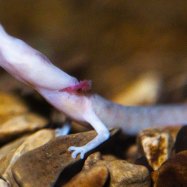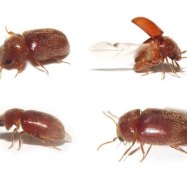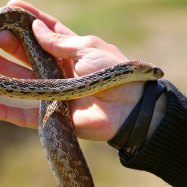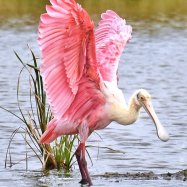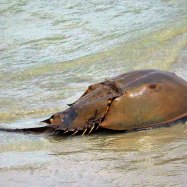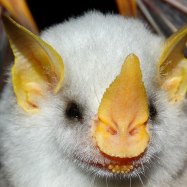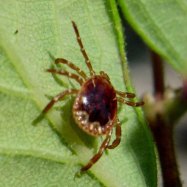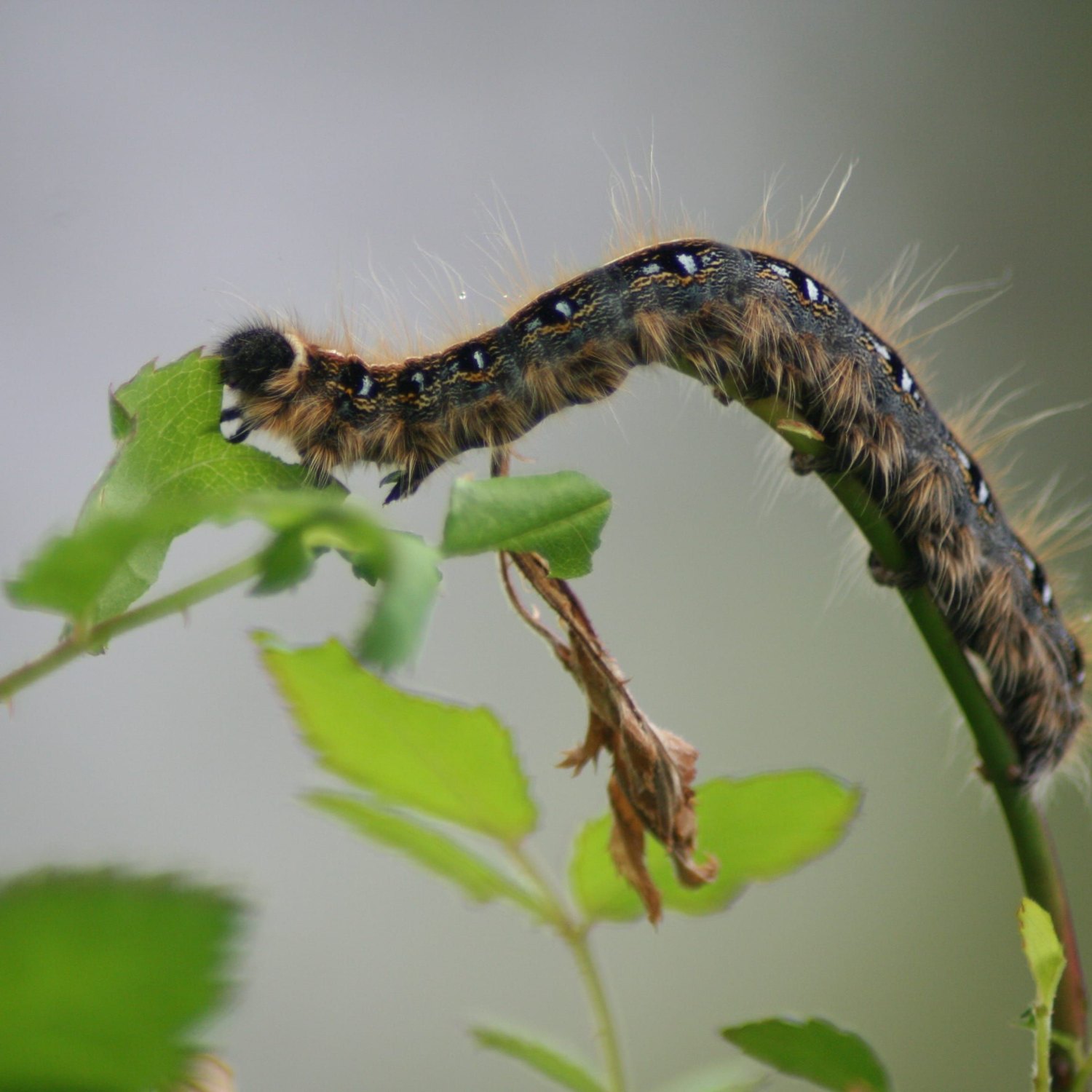
Tent Caterpillar
Up to 2 inches
Tent caterpillars are fascinating creatures found throughout North America. Measuring up to 2 inches in length, these caterpillars belong to the Lasiocampidae family. Their unique body shape allows them to spin silken tents in trees, making them easy to spot. Keep an eye out for these curious critters on your outdoor adventures!
Animal Details Summary:
Common Name: Tent Caterpillar
Kingdom: Animalia
Habitat: Deciduous forests and woodlands
The Mysterious Tent Caterpillar: Exploring the Fascinating World of Malacosoma americanum
With its distinctive black, brown, and yellow coloration and unique tent-like shelters, the tent caterpillar (Malacosoma americanum) is one of nature's most intriguing insects. Found in North America, this herbivorous creature is a member of the Lasiocampidae family and belongs to the class Insecta, making it a close relative of familiar butterflies and moths.While many of us may have stumbled upon the fascinating sight of a tent caterpillar's tent-like nest in the branches of a tree, there is much more to this creature than meets the eye. In this article, we will delve into the world of the tent caterpillar, exploring its scientific name, habitat, feeding habits, geographical distribution, and more Tent Caterpillar.
The Basics: Scientific Classification and Common Name
Before we dive into the fascinating details of the tent caterpillar's life, let's start with the basics. As mentioned earlier, the scientific name of this creature is Malacosoma americanum. This name is derived from the Greek words "malakos," meaning soft or pliable, and "soma," meaning body. This is a reference to the caterpillar's soft and flexible body.On the other hand, the tent caterpillar's common name, as the name suggests, is derived from its unique shelter-making behavior. However, not all members of the Lasiocampidae family are known to create tents, making the tent caterpillar an exception among its relatives.
A Peek into the Tent Caterpillar's Kingdom and Phylum
The tent caterpillar belongs to the kingdom Animalia, which includes all animals that are multicellular, heterotrophic, and lack a cell wall. Within this kingdom, they belong to the phylum Arthropoda, which is the largest phylum with over a million known species.Arthropods are characterized by their segmented bodies, jointed legs, and exoskeleton made of chitin Thrush. This phylum also includes insects, spiders, crustaceans, and other fascinating creatures.
Order and Family: The Curious World of Lepidoptera
The tent caterpillar is classified as a member of the order Lepidoptera, which includes butterflies and moths. The name "Lepidoptera" is derived from the Greek words "lepis," meaning scale, and "ptera," meaning wings. This refers to the tiny scales that cover their wings, giving them their vibrant colors and patterns.Within the order Lepidoptera, the tent caterpillar belongs to the family Lasiocampidae. This family, also known as tent caterpillars and lappet moths, includes over 2,000 species worldwide. While most of the members of this family are found in the Northern Hemisphere, a few species can also be found in the Southern Hemisphere.
The Role of Habitat in the Tent Caterpillar's Life
The tent caterpillar's habitat is a crucial aspect of its life cycle. These creatures are commonly found in deciduous forests and woodlands, where they can find an abundance of their preferred food source - leaves. They are also known to inhabit orchards, parks, and gardens, making them common sights in many North American regions.The tent caterpillar's shelters are typically found on the branches of trees, providing a safe and cozy home for the caterpillars. These nests are constructed using silk and are often located in a fork in the branches, providing shelter against predators and weather.
The Fascinating Feeding Habits of the Tent Caterpillar
Like most members of the Lasiocampidae family, the tent caterpillar is a herbivore, meaning it feeds on plant materials. Its preferred food source is the leaves of deciduous trees, such as cherry, apple, and oak trees. They are known for their voracious appetite, and a large group of tent caterpillars can defoliate an entire tree in just a few days.Interestingly, tent caterpillars have a symbiotic relationship with other creatures known as "tent caterpillar parasites." These tiny wasps lay their eggs in the tent caterpillar's eggs, and their larvae feed on the developing caterpillars, reducing the number of tent caterpillars in an area.
Exploring the Geographical Distribution of the Tent Caterpillar
The tent caterpillar is native to North America, with its range extending from Canada to the United States. While they can be found throughout the continent, they are known to be more prevalent in the eastern regions of North America, in states such as New York, Ohio, and Pennsylvania.While tent caterpillars are primarily found in North America, a few species belonging to the Lasiocampidae family are found in Europe, Africa, and Asia. However, these species are not known to create tents and have different habits and behaviors compared to their North American counterparts.
An Unusual Insect Coloration and Body Shape
One of the most striking features of the tent caterpillar is its unique coloration. With its black, brown, and yellow stripes, it is easily distinguishable from other insects found in its habitat. This coloration serves as a warning to predators, indicating that the caterpillar may be toxic or harmful if eaten.The tent caterpillar's body shape is another intriguing aspect of its physical appearance. As a caterpillar, it has a long and slender body with tiny legs and protuberances called prolegs. These prolegs help the caterpillar move and grasp onto surfaces, making it easier for them to navigate through their habitat.
The Life Cycle of a Tent Caterpillar
The life cycle of a tent caterpillar includes four stages - egg, larva, pupa, and adult. The eggs, laid in large, velvety masses around branches or twigs, hatch into tiny caterpillars during the spring season. These caterpillars then proceed to construct their tent-shaped shelters, where they will reside until entering the next stage of their life cycle.After feeding and growing for several weeks, the tent caterpillar molts its skin and enters the pupal stage. During this stage, the caterpillar transforms into a pupa, which is encased in a cocoon made of silk. After a few days, the adult moth emerges from the cocoon and begins its short life span of a few weeks.
Letting Nature Take Its Course: Dealing With Tent Caterpillar Infestations
While tent caterpillars can be found in large numbers in some regions, they are not considered a serious pest. In most cases, these infestations are left to natural predators, such as birds, wasps, and spiders. However, in the case of a severe infestation, steps can be taken to control their population, such as manually removing their nests or using pesticides.While the tent caterpillar may seem like an annoying and destructive creature, it plays a crucial role in the ecosystem. As a food source for many predators and pollinators, it helps maintain a balance in the animal kingdom. Additionally, its silk is used in the production of fabric and can also be used as a protein source for animal feed.
The Tent Caterpillar: A Fascinating Insect Worth Exploring
In conclusion, the tent caterpillar (Malacosoma americanum) is a unique and captivating creature that has fascinated nature enthusiasts for centuries. From its distinctive tent-like shelters to its unusual coloration and complex life cycle, there is much to discover and appreciate about this insect.Found in North America, this herbivore belongs to the class Insecta, the order Lepidoptera, and the family Lasiocampidae. With its voracious appetite and symbiotic relationships with other creatures, it plays a vital role in the ecosystem. So the next time you come across a tent-like nest in a tree, take a moment to appreciate the wonders of nature and the remarkable and mysterious tent caterpillar.

Tent Caterpillar
Animal Details Tent Caterpillar - Scientific Name: Malacosoma americanum
- Category: Animals T
- Scientific Name: Malacosoma americanum
- Common Name: Tent Caterpillar
- Kingdom: Animalia
- Phylum: Arthropoda
- Class: Insecta
- Order: Lepidoptera
- Family: Lasiocampidae
- Habitat: Deciduous forests and woodlands
- Feeding Method: Herbivorous
- Geographical Distribution: North America
- Country of Origin: Canada and United States
- Location: Throughout North America
- Animal Coloration: Black, brown, yellow
- Body Shape: Caterpillar
- Length: Up to 2 inches
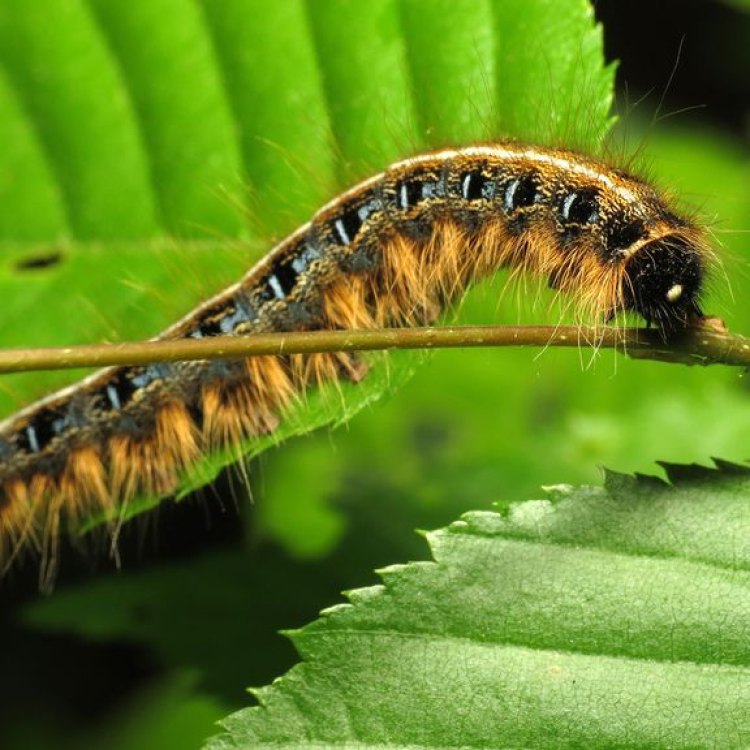
Tent Caterpillar
- Adult Size: Wingspan of 1-2 inches
- Average Lifespan: Approximately 1 year
- Reproduction: Sexual
- Reproductive Behavior: Mating occurs in late spring or early summer
- Sound or Call: No specific sound or call
- Migration Pattern: Non-migratory
- Social Groups: Solitary
- Behavior: Active during the day
- Threats: Predators, diseases, and human activities
- Conservation Status: Not evaluated
- Impact on Ecosystem: Can defoliate trees but are generally not considered severe pests
- Human Use: Not used by humans
- Distinctive Features: Caterpillars create silk tents in trees
- Interesting Facts: The silk tents created by tent caterpillars provide protection and warmth for the caterpillars. They also exhibit a synchronized behavior of moving to feeding sites.
- Predator: Birds, spiders, wasps, and other insects
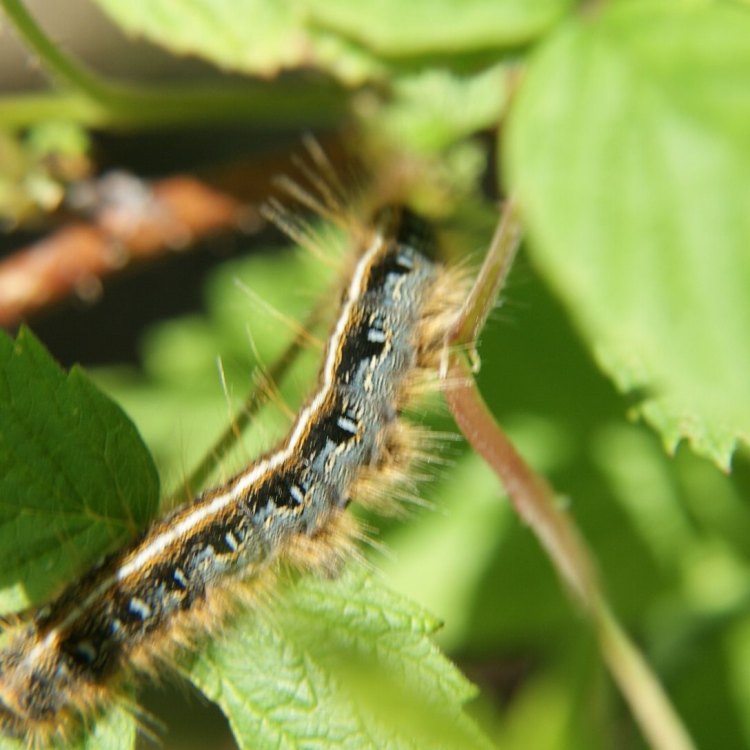
Malacosoma americanum
The Amazing Life of Tent Caterpillars and Their Unique Features
Nature is filled with a myriad of fascinating creatures, each with its own unique features and behaviors. Among these creatures is the tent caterpillar, a common insect found in many regions of the world. At first glance, they may appear to be just another typical caterpillar, but upon closer inspection, one will realize that these creatures have several interesting and distinctive features that set them apart from other insects. From their reproductive behavior to their impact on the ecosystem, the life of a tent caterpillar is full of remarkable elements that make them an intriguing subject of study PeaceOfAnimals.Com.The Basics of Tent Caterpillars
The tent caterpillar, or Malacosoma americanum, is a species of moth belonging to the Lasiocampidae family. They are widely distributed in North America, Europe, and parts of Asia and Africa. These caterpillars have a wingspan of 1-2 inches and typically live for about a year. They go through a complete metamorphosis, starting as eggs, then hatching into larvae (caterpillars), pupae, and finally emerging as adult moths.
Reproduction and Mating Behavior
Like many other insects, tent caterpillars reproduce sexually. The male and female caterpillars have different reproductive organs, and mating typically occurs in late spring or early summer. The female will lay clusters of eggs on branches, twigs, or under bark, with each cluster containing 150-350 eggs. After laying the eggs, the female moth will die. The eggs then overwinter, and the larvae hatch in early spring when the weather becomes warmer Toy Poodle.
No Specific Sound or Call
While many animals use sounds for communication, tent caterpillars do not have a specific sound or call like birds or other insects. Instead, they rely on other forms of communication, such as visual cues and pheromones released by the female moths to attract males for mating.
Non-Migratory and Solitary Creatures
Unlike some species of caterpillars that migrate to find food, tent caterpillars are non-migratory. They stay near their birthplace and hatch their eggs on the same tree or in its vicinity. Additionally, tent caterpillars are solitary creatures, meaning they do not form social groups or communities like some other insects. They rely on themselves for food and shelter, and each caterpillar goes through its own life cycle.
Active During the Day
While most moths are active during the night, tent caterpillars are primarily active during the day. They spend most of their time feeding on leaves, and their bright colors act as a warning to predators. This behavior is also known as diurnal, and it allows these caterpillars to take advantage of the warmth and sunshine during the day, which is essential for their growth and development.
Threats to Tent Caterpillars
Despite their colorful appearance, tent caterpillars face several threats in their environment. They are preyed upon by birds, spiders, wasps, and other insects. Diseases can also affect their population, particularly a virus called nuclear polyhedrosis virus, which can cause high mortality rates in caterpillar populations. Additionally, human activities such as deforestation and the use of pesticides can also harm tent caterpillars.
Conservation Status
Currently, the conservation status of tent caterpillars is not evaluated. This is because they are widespread and have stable populations in most of their range. However, their status could change in the future due to environmental factors, such as habitat destruction and climate change. It is essential to monitor their populations and take steps to protect them to ensure their survival.
The Impact of Tent Caterpillars on the Ecosystem
One of the most well-known behaviors of tent caterpillars is their ability to defoliate trees. When these caterpillars hatch, they create silk tents in trees to protect themselves and provide warmth. As they grow and mature, they move to feeding sites, stripping leaves off the branches, and sometimes completely defoliating trees. This behavior can have a significant impact on the ecosystem as it can affect the growth and survival of trees, which are essential for the balance of various animal and plant species.
The Unique Silk Tents of Tent Caterpillars
One of the most distinctive features of tent caterpillars is their ability to create silk tents. These tents are made by the caterpillars spinning silk threads from their bodies and attaching them to branches. The silk tents are essential for the caterpillars as they provide protection from predators, protection from extreme weather conditions, and a warm and cozy environment for the caterpillars to thrive.
Interestingly, these caterpillars exhibit a synchronized behavior when it comes to their silk tents. As the caterpillars move from the tent to feeding sites, they leave behind a silk thread that the other caterpillars use to follow their path. This behavior ensures that the caterpillars can move together efficiently, reducing their risk of getting lost or separated.
Humans and Tent Caterpillars
While tent caterpillars are not used by humans, they can indirectly impact human activities. For example, when tent caterpillars defoliate trees, it can impact the timber industry, reduce crop yields, and alter forest ecosystems. Additionally, the presence of caterpillars and their tents in trees can also be a nuisance for homeowners and cause issues for urban landscaping.
The Predators of Tent Caterpillars
Despite their tendency to defoliate trees, tent caterpillars are an essential part of the food chain. They serve as a food source for a variety of animals, including birds, spiders, wasps, and other insects. These predators play a crucial role in controlling the population of tent caterpillars and preventing them from becoming severe pests.
Fascinating Facts About Tent Caterpillars
There are many fascinating facts about tent caterpillars that make them an intriguing subject of study. For one, they are also known as Eastern tent caterpillars because they are native to Eastern North America. Moreover, tent caterpillars are a common sight during spring and early summer, creating their silk tents on trees. These tents can be found in various shapes and sizes, depending on the number of caterpillars in a particular area.
Another interesting fact is that tent caterpillars have tiny hair-like structures called setae on their bodies, which are used for protection and sensing their surroundings. These setae can cause skin irritation if touched, and some people may develop an allergic reaction to them.
A Final Note
In the grand scheme of nature, tent caterpillars may seem like just another species of moth. Still, upon closer inspection, they reveal a world of unique features and behaviors that make them stand out from other insects. From their coordinated movements to their impact on the ecosystem, these creatures have a remarkable and complex life that is worth appreciating and studying. As with any other creature, it is essential to respect and protect the tent caterpillars to ensure their survival and the balance of our ecosystem.
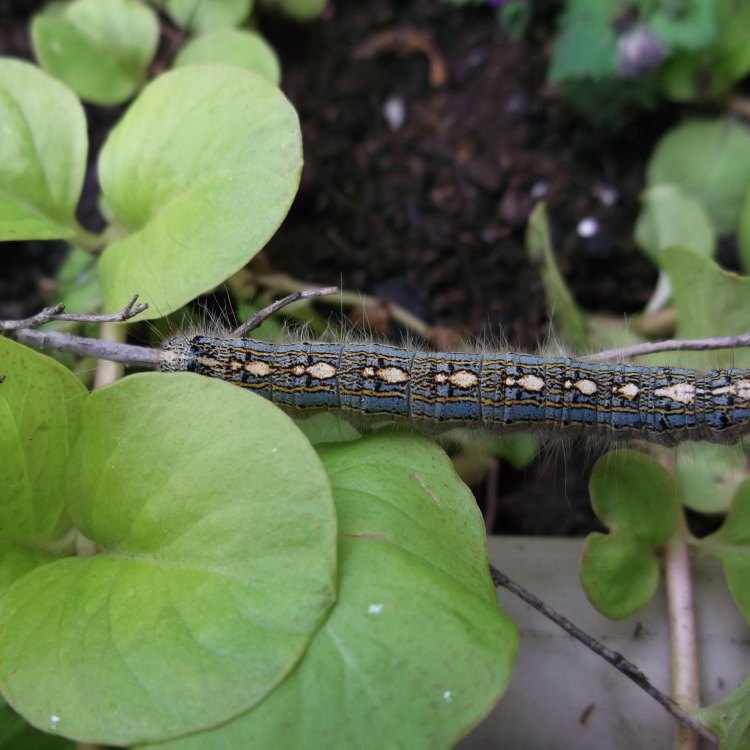
The Mysterious Tent Caterpillar: Exploring the Fascinating World of Malacosoma americanum
Disclaimer: The content provided is for informational purposes only. We cannot guarantee the accuracy of the information on this page 100%. All information provided here may change without prior notice.

